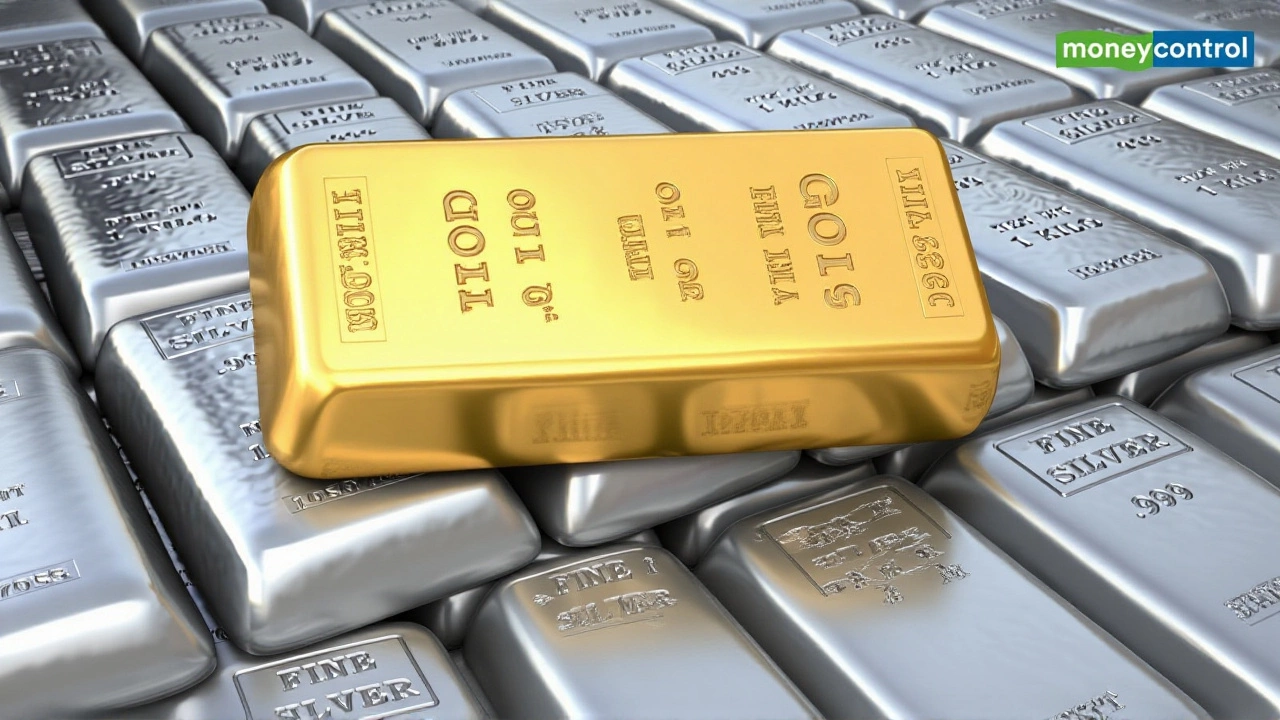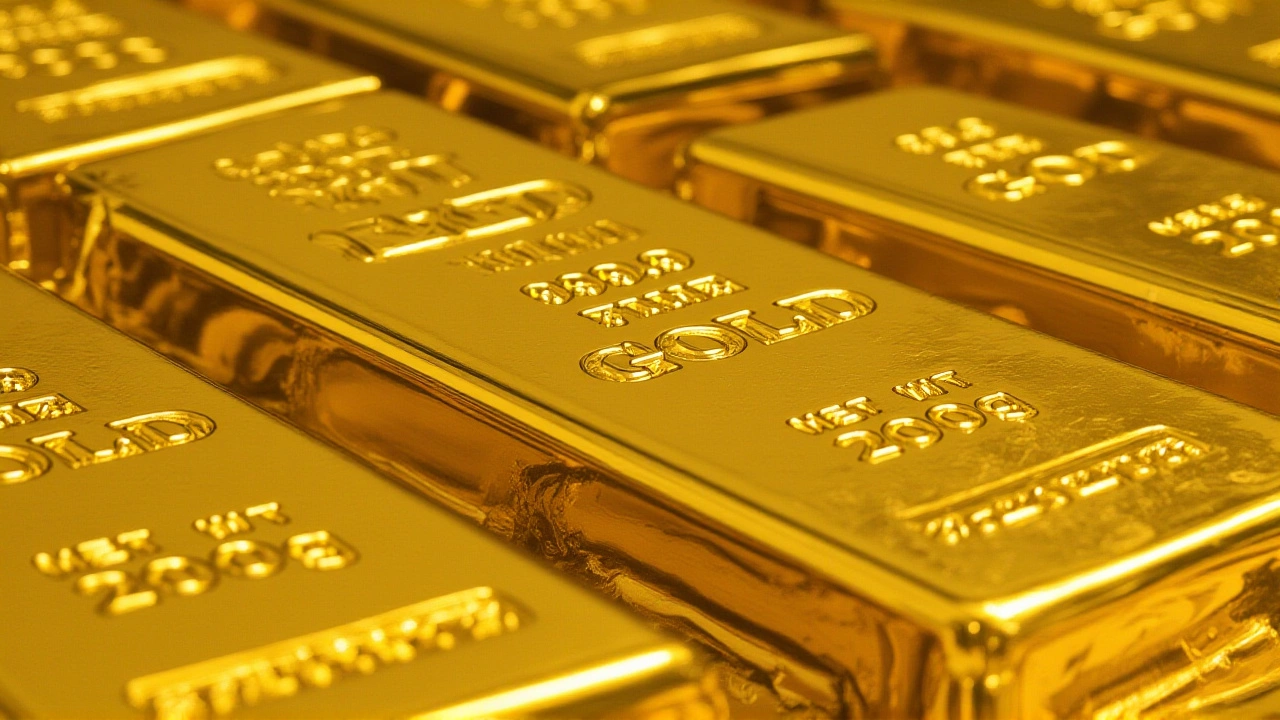When Rajat Mehta, senior market analyst at India Bullion Research looked at the numbers on Tuesday, October 7, 2025, he could barely believe his eyes. The December delivery gold futures on the Multi Commodity Exchange (MCX) spiked 651 rupees, settling at a jaw‑dropping ₹1,20,900 per 10 grams – the highest ever recorded in the market’s history. At the same time, silver wasn’t far behind, with the December contract climbing to ₹1,47,784 per kilogram, a modest 0.18 % rise but still a fresh record.
Record‑High Gold Prices Across India
In the physical market, the numbers were just as striking. 22‑carat gold traded at roughly ₹1,12,000 per 10 grams, while the coveted 24‑carat variety touched ₹1,22,070. The 18‑carat segment, popular for everyday jewelry, was priced at ₹91,670 per 10 grams. Across the country, regional variations added another layer of intrigue – Delhi’s bullion market quoted the same ₹91,670, whereas Kolkata and Mumbai hovered around ₹91,520.
Indore and Bhopal sat in the middle at ₹91,570, but the real outlier was Chennai, where buyers had to cough up ₹92,750 for 18‑carat gold – the most expensive city‑level price on record.
What’s Driving the Surge? U.S. Shutdown and Fed Expectations
The catalyst behind this meteoric rise isn’t a home‑grown supply crunch; it’s a storm brewing across the Pacific. The United States entered its seventh day of a government shutdown on September 30, 2025, freezing roughly $1.7 trillion – about a quarter of the federal budget. This event, coded as the U.S. government shutdownUnited States, sparked fears of destabilised fiscal policy and a slowdown in government‑linked spending.
Adding fuel to the fire, traders are betting that the Federal Reserve will start trimming interest rates in the coming weeks. A lower‑rate environment typically weakens the dollar, making gold – priced in dollars – more attractive to investors hunting safety.
“When you combine a massive, unexplained fiscal freeze with the prospect of cheaper money, gold becomes the go‑to insurance policy,” Mehta explained. “We’ve seen this pattern repeat during past U.S. budget impasses, but the sheer scale this time is unprecedented.”
City‑wise Price Snapshot
- Delhi: 18‑carat at ₹91,670 per 10 g
- Mumbai: 18‑carat at ₹91,520 per 10 g
- Kolkata: 18‑carat at ₹91,520 per 10 g
- Indore: 18‑carat at ₹91,570 per 10 g
- Bhopal: 18‑carat at ₹91,570 per 10 g
- Chennai: 18‑carat at ₹92,750 per 10 g (highest)
These figures show a tight band – a difference of just over ₹1,200 between the cheapest and priciest city – but that’s still a noticeable gap when families are budgeting for wedding jewelry that can weigh several hundred grams.
Investor Sentiment and Festive Season Demand
October is traditionally a pre‑wedding, pre‑Diwali buying window. With matrimonial seasons in full swing, retailers report queues forming earlier every year. The recent price jump has forced many to rethink timing.
“We’re seeing a split,” said Anita Sharma, owner of a boutique in Delhi. “Some customers rush to lock in today’s rates, fearing tomorrow’s could be higher. Others hold back, hoping the Fed cut will bring prices down.”
Analysts estimate that the current surge added roughly ₹1,150 per 10 grams to gold’s price compared to the previous trading day, while silver climbed about ₹1,000 per kilogram. Those incremental jumps may look modest, but on a scale of hundreds of grams they translate into thousands of rupees – money most families feel in their pockets.

What Might Come Next?
Looking ahead, three scenarios dominate market chatter:
- Short‑term correction: If the U.S. shutdown ends abruptly and the Fed signals a more aggressive rate‑cut path, we could see a modest pull‑back in gold as liquidity returns to equities.
- Extended rally: Should the shutdown linger beyond the next two weeks and the Fed hold rates steady, gold could inch higher, perhaps nudging the MCX futures past the ₹1,25,000 mark.
- Policy‑driven volatility: Any surprise fiscal stimulus from the U.S. or a sudden geopolitical flashpoint would reset the risk premium, sending gold into a new wave of price swings.
For now, Mehta advises caution. “Don’t chase the price. Treat gold as part of a diversified portfolio and keep an eye on the macro headlines – especially U.S. political developments and Fed minutes.”
Key Facts
- MCX December gold futures: ₹1,20,900 per 10 g (record high)
- 24‑carat spot price: ₹1,22,070 per 10 g
- U.S. government shutdown started: 2025‑09‑30, freezing $1.7 trillion
- Fed expected to cut rates in the coming weeks
- Chennai recorded the highest city‑level 18‑carat price: ₹92,750 per 10 g
Frequently Asked Questions
How does the U.S. government shutdown affect gold prices in India?
The shutdown freezes $1.7 trillion of U.S. fiscal activity, dampening confidence in the dollar and prompting investors worldwide to seek safe‑haven assets like gold. This shift pushes demand for gold up, which, combined with a weaker rupee, lifts Indian gold prices.
Which Indian city currently has the most expensive 18‑carat gold?
Chennai, where 18‑carat gold is trading at ₹92,750 per 10 grams, tops the list. It’s a few hundred rupees higher than the next most expensive market in Delhi.
What should buyers consider before purchasing gold during the festive season?
Buyers ought to weigh the current price surge against potential future corrections tied to U.S. policy moves. Securing a price now may protect against further spikes, but waiting could pay off if the Fed’s rate cuts soften the market.
What are the expert forecasts for gold in the next month?
Analysts split between a short‑term pullback if the shutdown ends swiftly, and a continued rally that could push MCX futures beyond ₹1,25,000 if fiscal uncertainty lingers. Market sentiment remains highly sensitive to U.S. headlines.
How do rising gold prices impact the Indian economy?
Higher gold prices raise the cost of traditional wedding and festive purchases, potentially squeezing household budgets. On the flip side, they boost revenues for domestic jewelers and can increase gold‑related investments that support the financial sector.


